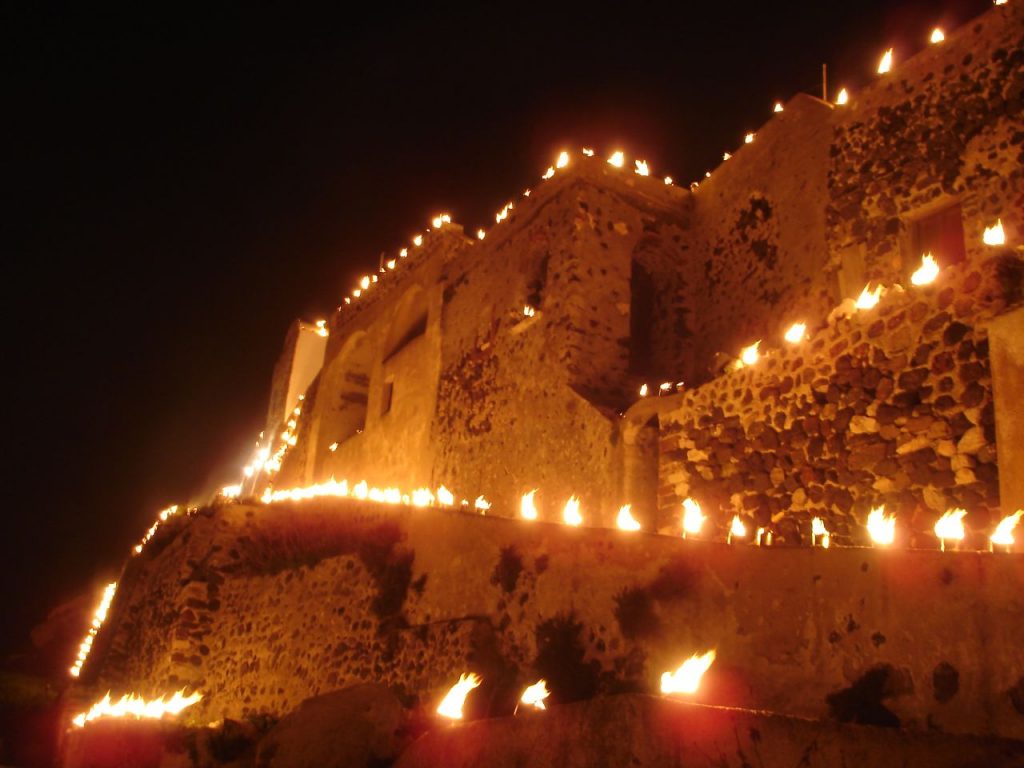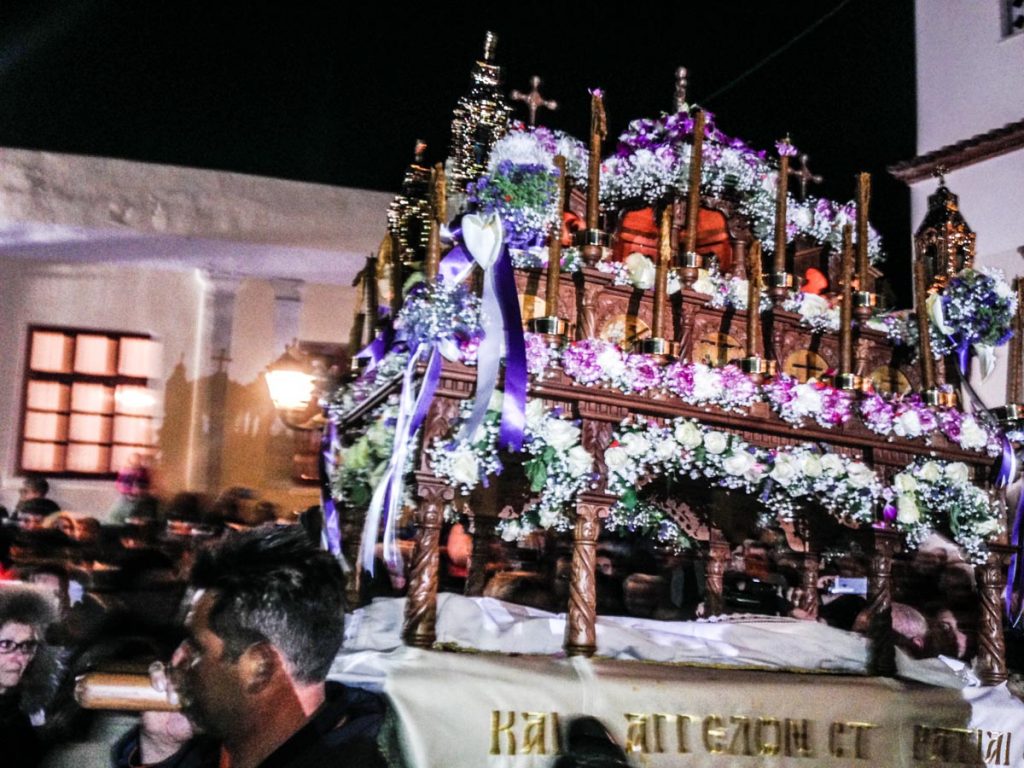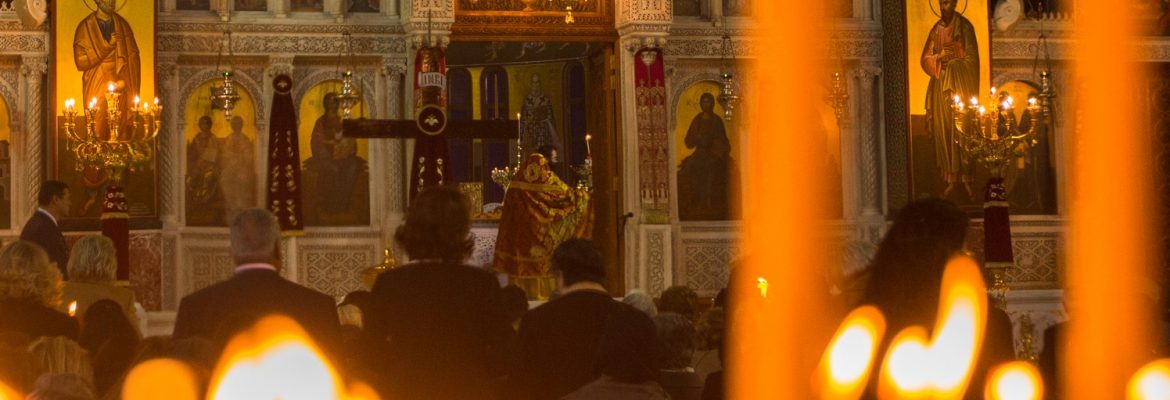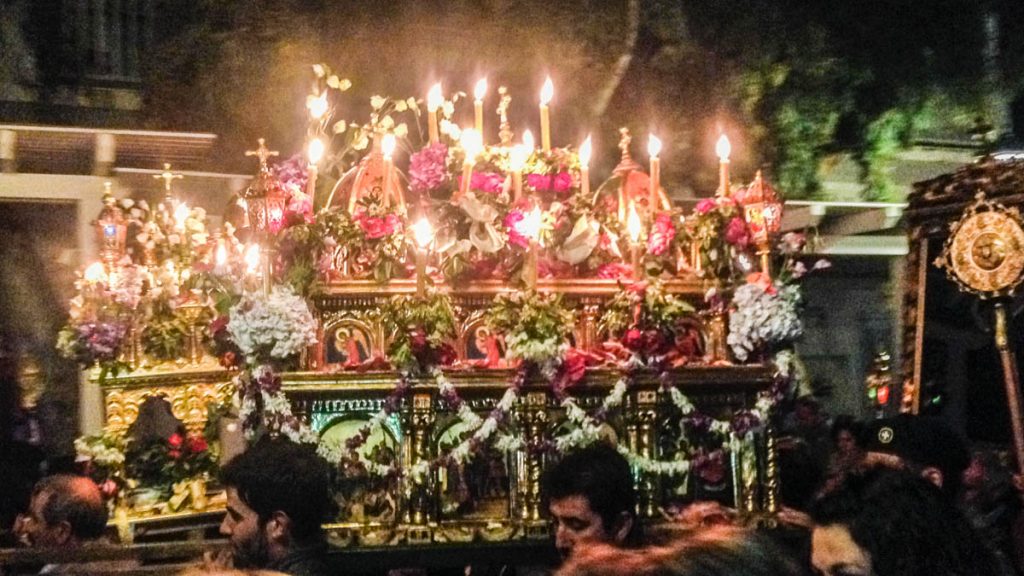Good Friday in Greece is both the most solemn holiday of the year, and the most beautiful. In every church throughout the whole country, Good Friday begins with bells. But not the joyous church bells we hear every Sunday and holidays — the bell is a mourning bell, ringing a single ring at regular intervals all day long. It is calling us to the Greek Easter Epitaph.
The tradition of the Greek Easter Epitaph
Inside every church is the Easter epitaph, the symbolic funeral bier of Jesus Christ. It is covered completely with flowers, and flowers are wired to the supports of the canopy and the canopy itself. From the morning and throughout the day, there is a line outside every church as people wait to pay their respects. People approach the beautifully decorated Easter Epitaph and kiss the icon of Christ, which has been taken down from the cross and wrapped in linen. In many places, little children will pass beneath the Easter Epitaph.
Of course, school is out. Public offices are closed, and in most communities stores also are closed until the midday. This way, everyone has the opportunity to visit the Easter Epitaph. Many of the faithful fast for the day — avoiding meat, dairy, eggs, even oil. It is a day of mourning. For those who will eat- olives, tarama (fish roe), and seafood, like calamari, are traditional (but not fish itself, which has blood).
Each community has its own customs as to when the Easter Epitaph is brought on a procession, but usually it is after dark. The streets surrounding each church are closed to make way for the holy processions- large sections of cities and villages alike close to traffic, and if you take a walk you will see not one procession, but several. The clergy and the altar boys, in beautiful liturgical robes, follow the Easter Epitaph- carried by young men of the congregation — as it makes its way through the streets. Everyone else follows, each holding a candle. The streets fill with candlelight and the scent of flowers. It is an unforgettable sight. Some people do not join the procession in the streets but they go out on their balconies to watch instead, also holding candles and adding to the beauty of the scene.
Local customs around Greece
Of course, the fact that there are so many processions at once has given rise to local customs. In Thessaloniki, the processions from the Church of Grigoriou Palama- Thessaloniki’s Metropolitan Cathedral, and the procession from Agia Sophia, the loveliest church of the center, meet at a central intersection. And on the island of Syros, which also has a large Catholic population- Greece’s largest- the Catholics celebrate Good Friday on the same day the Orthodox do (Catholic Easter is usually earlier than Orthodox Easter). Processions from Catholic and Orthodox churches alike meet in Miaouli square in a united display of devotion.

In many places, bands playing solemn music often accompany the processions. The town of Goumenissa though is known for their brass bands- the “Chalkina Goumenissas”. Three processions of bands meet- over 100 musicians gathered together in the streets of this small town. It is a lively experience.
As the processions return to the churches, it is sometimes the practice that the pier is held high in the air at the entrance, so that we might duck and pass underneath it, as the children have done earlier in the day inside. We do this to express our reverence and humility.

Even on this most solemn of days, the joy of Easter is unmistakably in the air. After church, everyone goes home to prepare for the most joyous event in the Orthodox calendar, now less than 24 hours away.
This is a beautiful, meaningful start to the most significant weekend in the Christian calendar. Have you ever experienced the Greek Easter Epitaph for yourself?




